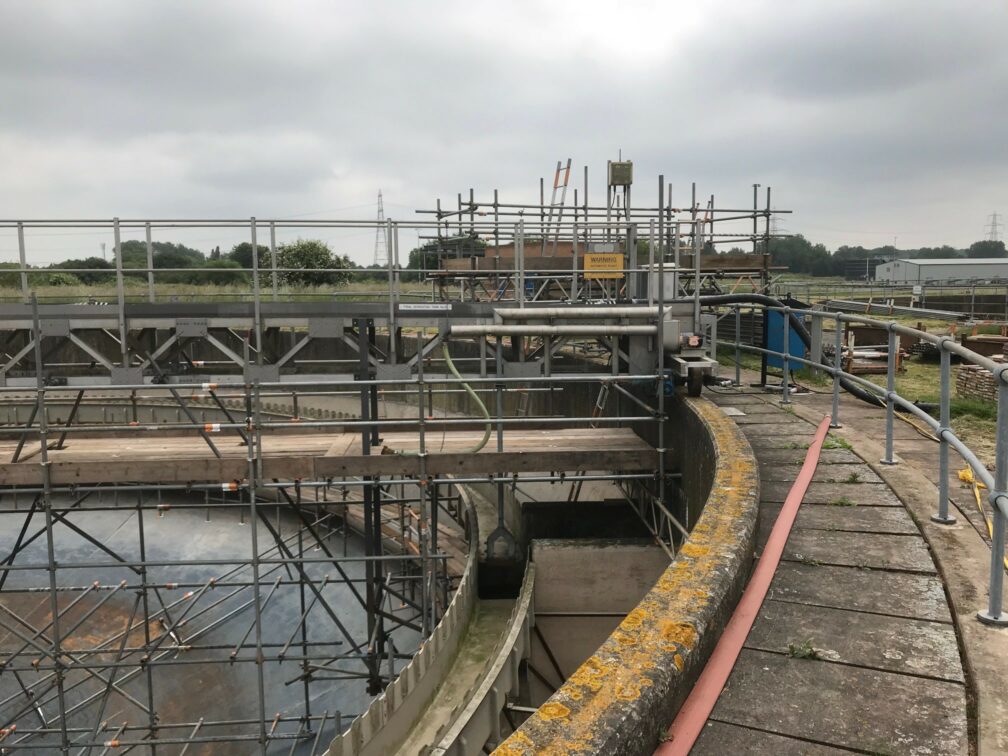Cantilever scaffolding, aka ‘cantilever scaffold’ is a specialised construction and maintenance support system. It is designed to provide access to elevated areas. You will tend to come across it when the ground below is obstructed or inaccessible. What makes a cantilever different to conventional scaffolding, is that it extends horizontally from an existing structure. Cantilever scaffolding essentially reaches out to create a work platform. In comparison, conventional scaffolding relies on vertical support from the ground up. This unique design allows construction and maintenance professionals to carry out their tasks safely and efficiently in situations where traditional scaffolding may not be possible.
In this blog, we will delve into other aspects of cantilever scaffolding including procedure, safety requirements, regulations and limitations to provide you with a comprehensive understanding of this essential construction tool.
Cantilever Scaffolding Procedure:
The procedure for erecting cantilever scaffolding involves several key steps:
1. Assessment and Planning:
The first step in cantilever scaffolding is to assess the site and identify the need for this type of scaffolding. It is important to plan the placement of the scaffold taking into account the following factors: load-bearing capacities, access requirements and structural considerations.
2. Secure Anchorage:
Next it is important to ensure that the anchor points on the existing structure are secure and are able to withstand the loads imposed by the scaffold. At this point, structural engineers may need to be called in!
3. Erection of Brackets:
The cantilever brackets will then need to be securely installed to the structure. These brackets support the scaffold so it is really important for these to be fixed firmly in place.
4. Platform Installation:
At this point, the horizontal platform beams can be attached to the brackets. These beams are what forms the working platform.
5. Guardrails and Toeboards:
To provide fall protection for the workers, guardrails and toeboards need to be installed.
6. Access:
Establish safe access points to the platform, such as ladders for staircases.
7. Regular Inspection:
Regularly inspect the cantilever scaffold for any signs of wear, damage, or instability. Maintenance and repairs should be carried out promptly.
Cantilever Scaffolding Techniques
Several techniques can be employed to enhance the efficiency and safety of cantilever scaffolding, including:
Cantilever Extensions: To extend the reach of the scaffold, additional beams and brackets can be added. However, it’s essential to follow load capacity guidelines and engineering recommendations.
Counterweights: Counterweights may be necessary to balance the scaffold’s weight and prevent tipping. These weights are often added on the opposite side of the cantilever.
Tie-Ins: In some cases, tie-ins to the existing structure may be required to provide additional stability. These tie-ins should be carefully designed and engineered.
Cantilever Scaffolding Safety Requirements:
Safety is paramount when working with cantilever scaffolding. Here are some crucial safety requirements:
1. Training: All workers that will use the cantilever should have received training on scaffold assembly, use and necessary safety procedures.
2. Fall Protection: Fall protection measures, such as guardrails and personal fall arrest systems should be in place.
3. Load Limits: Limits are there for a reason, they should be adhered to. These limits will be specified by the scaffolds manufacturer and engineering calculations.
4. Regular Inspections: Although it may seem like a chore, daily inspections and periodic through inspections should always be carried out. These will identify and address any potential hazards.
5. Weather Considerations: Extreme weather conditions can impact the stability of cantilever scaffolding (as with many other types of scaffolding!). Wind and rain can increase the risk of accidents, so work should be postponed during adverse weather.
What Are the Regulations for Cantilever Scaffolding?
Regulations for cantilever scaffolding will vary by region, but they typically involve compliance with occupational safety and health guidelines. It’s crucial to research and adhere to local and national regulations to ensure legal and safe use.
What Is the Maximum Length of Cantilever Scaffolding?
The maximum length of cantilever scaffolding will depend on many different factors including the load-bearing capacity of the structure, the type and size of scaffold components, and engineering calculations. Again, a structural engineer may be needed here! They will be able to determine the safe maximum length for specific projects.
Safeway Scaffolding
If you are looking for scaffolding services in Birmingham or across the west midlands. We have a commitment to excellence and have earned our reputation as a premier scaffolding contractor. Safeway Scaffolding has provided tailored scaffolding solutions for commercial, domestic and bespoke projects across the county. If you would like to find out more about our services, please do not hesitate to get in touch with our team.Contact us on 01675 465593 or fill out our online contact form and we will get back to you as soon as we can.

